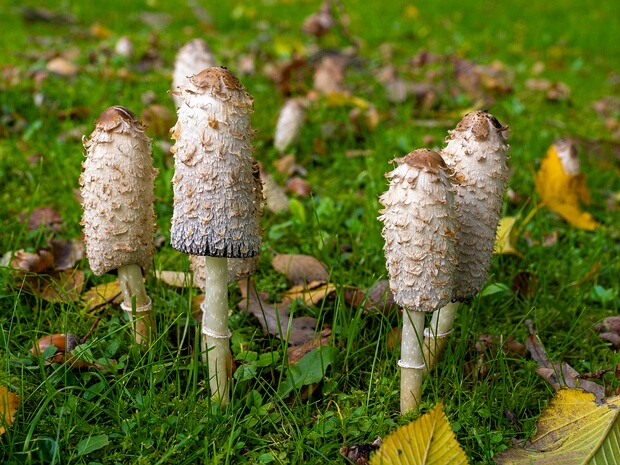Agaricaceae - Шампиньоновые - Agaric family - Champignonartige 8/13/09—10/10/25
The Agaricaceae family, also known as the Agaric family or Champignonartige, is a diverse group of fungi that contains approximately 85 genera and over 1,300 species. This family is part of the Agaricales order, which is one of the largest and most diverse orders within the fungal kingdom.
Members of the Agaricaceae family are characterized by their gilled fruiting bodies, which typically have a central stipe and a cap. The gills are often free from the stipe or only slightly attached, and the spore print colors can vary widely, from white to pink, brown, or black.
The fruiting bodies of Agaricaceae species can be found in various habitats, including grasslands, forests, and even urban environments. Some species are saprotrophic, decomposing organic matter, while others are ectomycorrhizal, forming symbiotic relationships with the roots of certain plants.
Some of the most well-known genera within the Agaricaceae family include Agaricus, which contains the widely cultivated white button mushroom (Agaricus bisporus), and Macrolepiota, which includes the sought-after parasol mushroom (Macrolepiota procera).
The Agaricaceae family also contains several species that are considered toxic or hallucinogenic, such as some members of the Panaeolus and Psilocybe genera. These mushrooms contain psychoactive compounds, like psilocybin and psilocin, which can cause hallucinations and altered perceptions when consumed.
Many species within the Agaricaceae family are considered edible and are consumed worldwide. In addition to the white button mushroom and parasol mushroom, other popular edible species include the meadow mushroom (Agaricus campestris) and the almond mushroom (Agaricus subrufescens).
However, not all members of the Agaricaceae family are safe to consume, and some can be easily confused with toxic species. For example, the yellow-staining mushroom (Agaricus xanthodermus) resembles the edible white button mushroom but can cause gastrointestinal upset when ingested.
Spore sizes and shapes within the Agaricaceae family can vary widely, with some species producing small, round spores and others producing large, elongated spores. The spore-producing structures, or basidia, usually contain two to four spores each.
Fruiting bodies of Agaricaceae mushrooms can be found throughout the year, depending on the species and local climate conditions. However, the majority of species tend to fruit in the late summer to early autumn months.
Some species within the Agaricaceae family have been used for medicinal purposes, with research showing potential benefits in areas such as immune support, cancer treatment, and neuroprotection.
The Agaricaceae family has a worldwide distribution, with species found on every continent except Antarctica. Some species are widespread and abundant, while others have more restricted ranges and are considered rare.

Agaricaceae - Шампиньоновые - Agaric family - Champignonartige